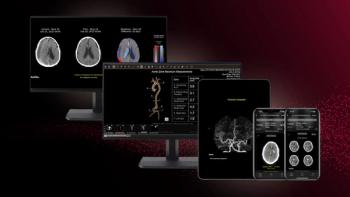
Radiology Findings In Patients With H7N9 Influenza
Researchers determined radiologic findings among humans with influenza A H7N9.
Rapidly progressive ground-glass opacities (GGOs), and consolidations with air bronchograms and interlobular septal thickening are found in patients with influenza A H7N9, according to a study published in the journal
Chinese researchers sought to determine the radiologic findings in patients who have been diagnosed with avian-origin influenza A H7N9.
The study group comprised nine men and three women who underwent chest radiography and thin-section CT. The researchers assessed lesion patterns, distributions and changes in CT at follow-up. Imaging and clinical data were reviewed by two chest radiologists.
The results showed that all 12 patients exhibited GGOs. In addition, the researchers found: consolidations (in 11 patients), air bronchograms (in 11 patients), interlobular septal thickening (in 11 patients), centrilobular nodules (in seven patients), reticulations (in seven patients), cystic changes (in four patients), bronchial dilatation (in three patients), and subpleural linear opacities (in three patients).
The lung lesions involved three or more lobes in all cases. In 11 patients, they were in the right lower lobe.
Of the 10 patients imaged in follow-up, three showed improvements in lesions while seven showed worsening.
The researchers concluded the main imaging findings in H7N9 pneumonia are rapidly-progressive GGOs and consolidations with air bronchograms and interlobular septal thickening, with right lower-lobe predominance. The severity of these findings is associated with the severity of the clinical presentation.
Newsletter
Stay at the forefront of radiology with the Diagnostic Imaging newsletter, delivering the latest news, clinical insights, and imaging advancements for today’s radiologists.



























